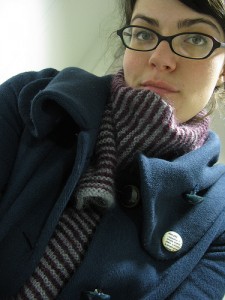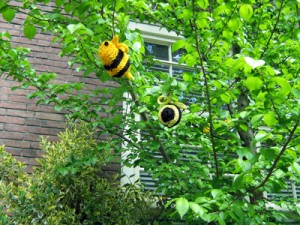I’ve been waiting for Andrew Maynard’s comments (on his 2020 Science blog) about the Friends of the Earth (FoE) guest bloggers’ (Georgia Miller and Ian Illuminato) response (ETA June 6, 2016: Just how risky can nanoparticles in sunscreens be? Friends of the Earth respond; a 2020 Science blog June 15, 2010 posting) to his posting (Just how risky could nanoparticles in sunscreens be?) where he challenged them to quantify the nanosunscreen risk to consumers. His reflections on the FoE response and the subsequent discussion are well worth reading. From Andrew’s posting, The safety of nanotechnology-based sunscreens – some reflections,
Getting nanomaterials’ use in context. First, Georgia and Ian, very appropriately in my opinion, brought up the societal context within which new technologies and products are developed and used:
“why not support a discussion about the role of the precautionary principle in the management of uncertain new risks associated with emerging technologies? Why not explore the importance of public choice in the exposure to these risks? Why not contribute to a critical discussion about whose interests are served by the premature commercialisation of products about whose safety we know so little, when there is preliminary evidence of risk and very limited public benefit.”
Andrew again,
… we need to think carefully about how we use scientific knowledge and data – “evidence” – in making decisions.
As he goes on to point out, cherrypicking data isn’t a substantive means of supporting your position over the long run.
Unfortunately it’s a common practice on all sides ranging from policymakers, politicians, civil society groups, consumers, medical institutions, etc. and these days we don’t have the luxury, ignorance about downsides such as pollution and chemical poisoning on a global scale for example, that previous generations enjoyed.
Three of the scientists whose work was cited by FoE as proof that nanosunscreens are dangerous either posted directly or asked Andrew to post comments which clarified the situation with exquisite care,
Despite FoE’s implications that nanoparticles in sunscreens might cause cancer because they are photoactive, Peter Dobson points out that there are nanomaterials used in sunscreens that are designed not to be photoactive. Brian Gulson, who’s work on zinc skin penetration was cited by FoE, points out that his studies only show conclusively that zinc atoms or ions can pass through the skin, not that nanoparticles can pass through. He also notes that the amount of zinc penetration from zinc-based sunscreens is very much lower than the level of zinc people have in their body in the first place. Tilman Butz, who led one of the largest projects on nanoparticle penetration through skin to date, points out that – based on current understanding – the nanoparticles used in sunscreens are too large to penetrate through the skin.
These three comments alone begin to cast the potential risks associated with nanomaterials in sunscreens in a very different light to that presented by FoE. Certainly there are still uncertainties about the possible consequences of using these materials – no-one is denying that. But the weight of evidence suggests that nanomaterials within sunscreens – if engineered and used appropriately – do not present a clear and present threat to human health.
Go to the comments section of the 2020 Science blog for the full text of Peter Dobson’s response, Brian Gulson’s response posted by Andrew on Gulson’s behalf, and Tilman Butz’s response posted by Andrew on Butz’s behalf. (I found these comments very helpful as I had made the mistake of assuming that there was proof that nanoparticles do penetrate the skin barrier [as per my posting of June 23, 2010].)
I want to point out that the stakes are quite high despite the fact that sunscreens are classified as a cosmetic. I’ve heard at least one commentator (Pat Roy Mooney of The ETC Group, Interview at 2009 Elevate Festival at 4:32) scoff because nanotechnology is being used in cosmetics as if it’s frivolous. Given the important role sunscreens play in our health these days, a safe sunscreen has to be high on the list of most people’s priorities but this leads to a question.
Should we stop developing more effective nanotechnology-enabled sunscreens (and by extension, other nanotechnology-enabled products) due to concern that we may cause more harm than good?
Andrew goes on to provide some interesting insight into the issue citing the Precautionary Principle and supplementing his comments with some of Richard Jones’ (author of Soft Machines book and blog and consultant to UK government on various nanotechnology topics) suggestions to refine the Precautionary Principle guidelines,
1. what are the benefits that the new technology provides – what are the risks and uncertainties associated with not realising these benefits?
2. what are the risks and uncertainties attached to any current ways we have of realising these benefits using existing technologies?
3. what are the risks and uncertainties of the new technology?
I strongly suggest that anyone interested in the issues around risk, the precautionary principle, emerging technologies, and the role of research read this posting (as well as its predecessors) and as much of the discussion as you can manage.
One additional thought which was posited in the comments section by Hilary Sutcliffe (you’ll need to scroll the comments as I haven’t figured out how to create a direct link to her comment) has to do with the role that companies have with regard to their research and making it available in the discussion about health, safety, and the environment (HSE),
… we need to be able to access ‘the best available information’ in order to make informed decisions in the face of uncertainty and enable the rounded assessment that Prof Richard Jones suggests. This is indeed essential, but ‘we’ are usually constrained by the lack of one very large chunk of ‘available information’ which is the HSE testing the companies themselves have done which leads them to judge the material or product they have developed is safe.
Further in the comment she goes on to discuss a project (What’s fair to share?) that her organization (MATTER) is planning where they want to discuss how companies can share their HSE data without giving away intellectual property and/or competitive advantages.
Finally, I want to paraphrase something I said elsewhere. While I am critical of the tactics used by the Friends of the Earth in this instance, there is no doubt in my mind that the organization and other civil society groups serve a very important role in raising much needed discussion about nanotechnology risks.

